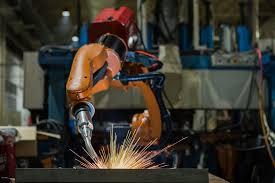Building your computer gives you the chance to customize a system to your requirements and tastes, which may make it an interesting and satisfying undertaking. However, the key to a successful build is making sure you acquire the appropriate pieces. Making wise selections might be difficult with so many components on the market, ranging from motherboards and RAM to CPUs and GPUs. This post offers a thorough how-to on three crucial tactics to make sure you choose the appropriate components for your computer construction. You may minimize compatibility problems, optimize performance, and build a dependable and effective system by using these suggestions.
Understand Your Needs and Set a Budget
Establishing the goal of your computer design is crucial before you begin choosing components. Knowing what you need can help you select the appropriate parts that satisfy your demands without going over budget. Here are some crucial things to remember:
Determine the Purpose of Your Build
Different hardware configurations are needed for different use cases. A workstation for video production or 3D rendering, for instance, could demand a strong GPU, but a gaming PC might only need an outstanding performance CPU and lots of RAM. Reliability and efficiency might be prioritized over symmetrical components in a general-purpose home or business PC.
Set a Realistic Budget
Budgeting reduces your alternatives and keeps you from going overboard. Determine the mean cost of the necessary components and adjust your spending plan appropriately. Achieving the optimal value for your investment requires finding a balance between performance and cost. Don’t forget to factor in extra expenses for accessories, software, and any equipment required for assembly.
Put Important Elements First
Determine, based on your demands, the elements that are most important for your construction. For example, whereas content makers would prefer a strong CPU and big amounts of quick RAM, gamers should emphasize a high-quality GPU. Spend more of your money on these essentials and look for more affordable alternatives for the less important items.
Ensure Component Compatibility
Making sure that every component of a computer is compatible with every other component is one of the most crucial steps in the process. Hardware damage, performance problems, and system instability can all result from incompatible components. To guarantee compatibility, take the following actions:
Verify Chipset and Socket Compatibility
The chipset and connector type of the CPU and motherboard must work together. Every CPU model is made to accommodate a certain type of socket, like AMD’s AM4 or Intel’s LGA1200. Furthermore, the motherboard’s chipset should support the CPU’s characteristics and efficiency levels. To confirm compatibility, refer to the specifications provided by the manufacturer for your motherboard and CPU.
Verify RAM Compatibility
Make sure that the kind, speed, and quantity of the RAM you select (DDR3, DDR4, DDR5) are all compatible with your motherboard. Specific limitations apply to the greatest quantity of RAM and operating speed that motherboards can handle. To verify the supported RAM combinations, see the manual or specs of the motherboard.
Research and Compare Components
Choosing the right components for your design requires extensive investigation. Use a variety of sites to read reviews, compare items, and compile data on features, dependability, and cost.
Read Reviews and Benchmarks
Reviews and benchmarks offer insightful information about the dependability and performance of various components. Comprehensive evaluations and performance tests for CPUs, GPUs, processors, and other components may be found on websites such as AnandTech, PCMag, and Tom’s Hardware you can search for example “ Newegg reviews”. Considerations including power consumption, thermal performance, and real-world application efficiency are important.
Consult User Feedback
Reviews published by customers on e-commerce sites such as Amazon and Newegg might offer useful information about component problems and user experience. Examine the feedback for trends to find recurring themes in strengths and shortcomings. For user interaction and recommendations, check out forums like the Linus Tech Tips group and Reddit’s r/buildapc.
Conclusion
It may be a satisfying experience to build your computer but to make sure you have the appropriate parts, extensive preparation and study are necessary. You may design a dependable and high-performing system that meets your unique demands by knowing your needs, creating a budget, making sure components work together, and carefully examining and contrasting components. By taking your time and doing your research, you may steer clear of typical errors and complete a build that lives up to your expectations. When assembling a workstation, gaming rig, or general-purpose PC, these techniques will help you choose the right parts for the job.



